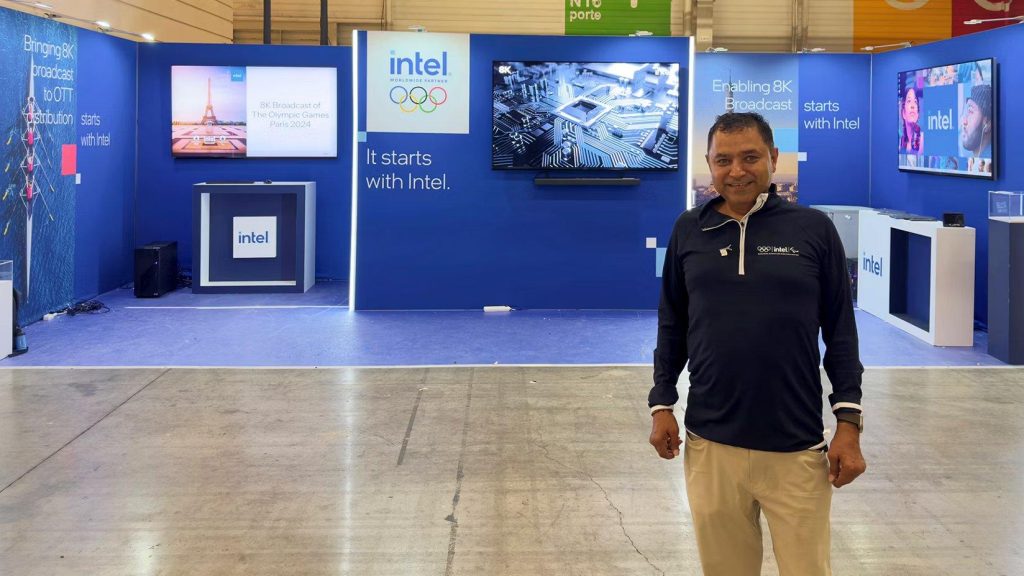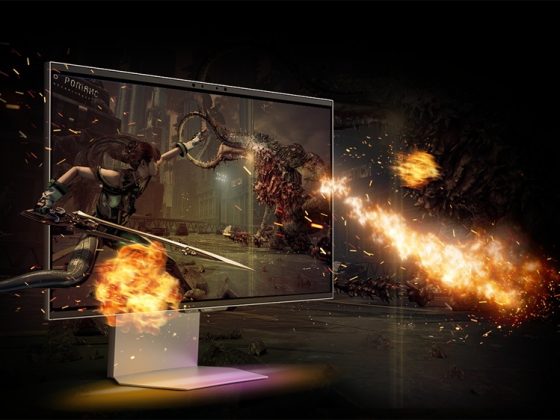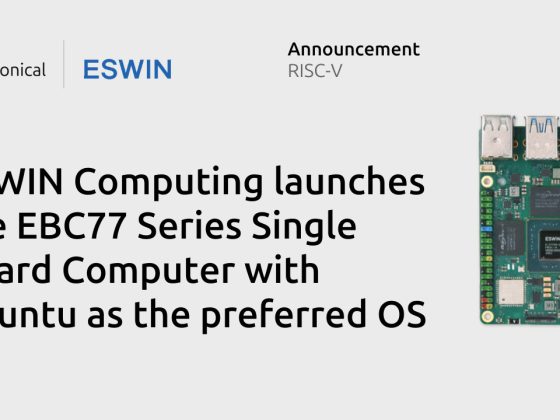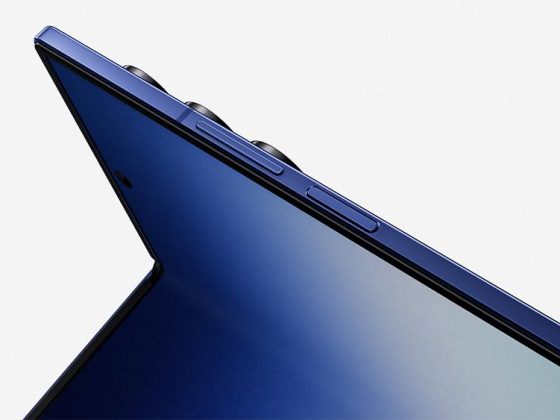The broadcast is enabled by Intel Xeon CPUs and other hardware.
Watching your favorite live Olympic sport from the comfort of your home in 8K video resolution, the highest broadcast-grade viewing quality, would, before today, have been something of a pipe dream.
At the Olympic Games Paris 2024, Intel will demonstrate how this vision is already reality thanks to long-standing collaborations among Intel, Olympic Broadcasting Services (OBS), and a handful of broadcasters and partners around the globe.
As the Official Worldwide AI Platform Partner of the Olympic and Paralympic Games Paris 2024, Intel will introduce new, innovative AI experiences based on the company’s hardware and software that enable next-generation engagement for fans, organizers, athletes and viewers around the world.
(Watch the opening ceremony live on July 26 beginning 7:30 p.m. CET/10:30 a.m. PDT).
Throughout the Olympic Games Paris 2024, AI-optimized broadcast servers will encode and compress OBS-produced 8K live signals that OBS will deliver to selected media rights holders across the open internet.
The servers are powered by the latest 5th Gen Intel® Xeon® processors (Emerald Rapids) and 4th Gen Intel® Xeon® processors (Sapphire Rapids) with Intel® AI accelerator (AMX), and Deep Learning Boost technology.
Compressing that data and decoding it on the other side of the world is by no means a simple feat: Intel is compressing live raw feeds measuring 48 gigabits per second (Gbps) into a VVC-enabled livestream measuring 40 to 60 megabits per second (Mbps) – a compression ratio of 1,000 times – in under 400 milliseconds.
That 8K over-the-top (OTT) broadcast will then be delivered by OBS around the world to 8K TVs connected to the latest Intel-enabled PCs.
Intel has a long history in this space.
Partnering with OBS, broadcasters and technology providers, Intel has powered OBS to livestream 416 hours of live and recorded Olympic Games content and processed 4.7 petabytes of data at the Olympic Games Tokyo 2020 – about 333 times the volume of all data stored in the U.S. Library of Congress.
That industry partnership deepened at the Olympic Winter Games Beijing 2022 where Intel made available to OBS and global broadcasters the world’s first fully produced 8K virtual reality feed.

Intel-based Servers and PCs Deliver the Highest-Quality Visual Content at the Lowest Bitrate
“Our goal at the Olympic Games Paris 2024 is a step closer toward making 8K mainstream, and to deliver live 8K streaming using advanced h.266/VVC encoding technologies that reach the highest quality at the lowest bitrate possible around the globe,” said Ravindra (Ravi) Velhal, global content technology strategist and 8K lead in the Software and Advanced Technology Group at Intel.
Olympic Games Paris 2024, explains Ravi, will be the world’s first live demonstration of an end-to-end 8K VVC livestreaming experience utilizing Intel’s 5th Gen Xeon CPUs to encode and Intel-based client CPUs and Arc GPUs to decode.
It provides a pathway for the future of low-latency, broadcast-grade 8K livestreaming over the internet.
That process of getting 8K live content from the Olympic Games stadium in Paris to an 8K-enabled TV on the other side of the planet is highly complex. It’s enabled by a constellation of Intel hardware and software technologies. The steps to accomplish the 8K broadcasts include:
- Broadcast-grade cameras in select Olympic Games venues capture live content in 8K at 60 frames per second in high definition (HDR) at 48 Gbps bitrate mixed with 32 audio channels.
- A purpose-built “broadcast in a box” encoder powered by the latest 5th Gen Intel Xeon CPUs processes that raw content in less than 400 milliseconds and distributes it across the internet within seconds.
- Around the world, Intel® Core™ i9 processor-based PCs with Intel® Arc™ graphics processing units and Intel® Core™ Ultra 9 processor-based laptops decode the OBS content in real time before displaying the video feed on an 8K TV protected by Intel’s high-bandwidth digital content protection technology.
Intel Processors Enable the Next Evolution of High-Definition Video: 8K Displays
Innovations like Intel® Xeon® Scalable processors with Intel® Advanced Matrix Extensions (Intel® AMX), a built-in AI accelerator and Intel® Deep Learning Boost (Intel® DL Boost) that encode live 8K/60FPS/HDR raw feed in milliseconds have been helping the industry take a revolutionary step toward 8K displays and its democratization.
8K display technology is the successor to 4K ultra-high-definition standards introduced in the early 2000s. (The world’s first 4K TV was released in 2012.)
In general, it takes about seven to 10 years for the media industry to evolve and embrace the next standard of visual and audio technology, says Ravi, citing examples of tectonic shifts in the evolution of the global media industry:
- The move from analog to digital displays in the late 1990s.
- The shift from standard-definition (SD) to high-definition (HD) content in the early 2000s.
- The subsequent shift from HD to 4K about a decade later, led by Intel and its ecosystem partners.
8K display technology introduces a much stronger sensation of realism, thanks to its ability to fully immerse the viewer in rich visual and audio content, a higher dynamic range and a higher frame rate for buttery-smooth sports action.
Smart AI Platform Algorithms Help Solve ‘World’s Biggest Distribution Problem’
Capturing rich, immersive 8K content may sound like a complex job, but getting it to where it needs to be – on the screens of viewers across the planet – is even more difficult.
During the Olympic Games Paris 2024, Ravi and his team will work on several events acquiring, processing and streaming petabytes of data.
It’s a job suited for a collection of advanced Intel-based AI platform technologies like Intel® Advanced Matrix Extensions (Intel® AMX) AI accelerators and Intel® Deep Learning Boost (Intel® DL Boost) that enable complex AI workloads to run without increasing the overall computing footprint.
“We leverage these technologies in our Xeon CPUs to analyze each scene, frame by frame, and to train our algorithms to process fast-moving data without compromising on latency and quality,” said Ravi, adding that the overall latency from camera to TV is just a few seconds, a figure unachievable in the past.
“Together with our industry and technology partners, we are solving the world’s biggest distribution roadblock that stands in the way of 8K live broadcasts. Paris 2024 proves that the future of low-latency, high-definition 8K livestreaming is here.”
Intel will work with OBS to stream selected events from Paris to Intel campuses and broadcasters worldwide.
For more information, visit Intel’s Olympic Games website.










